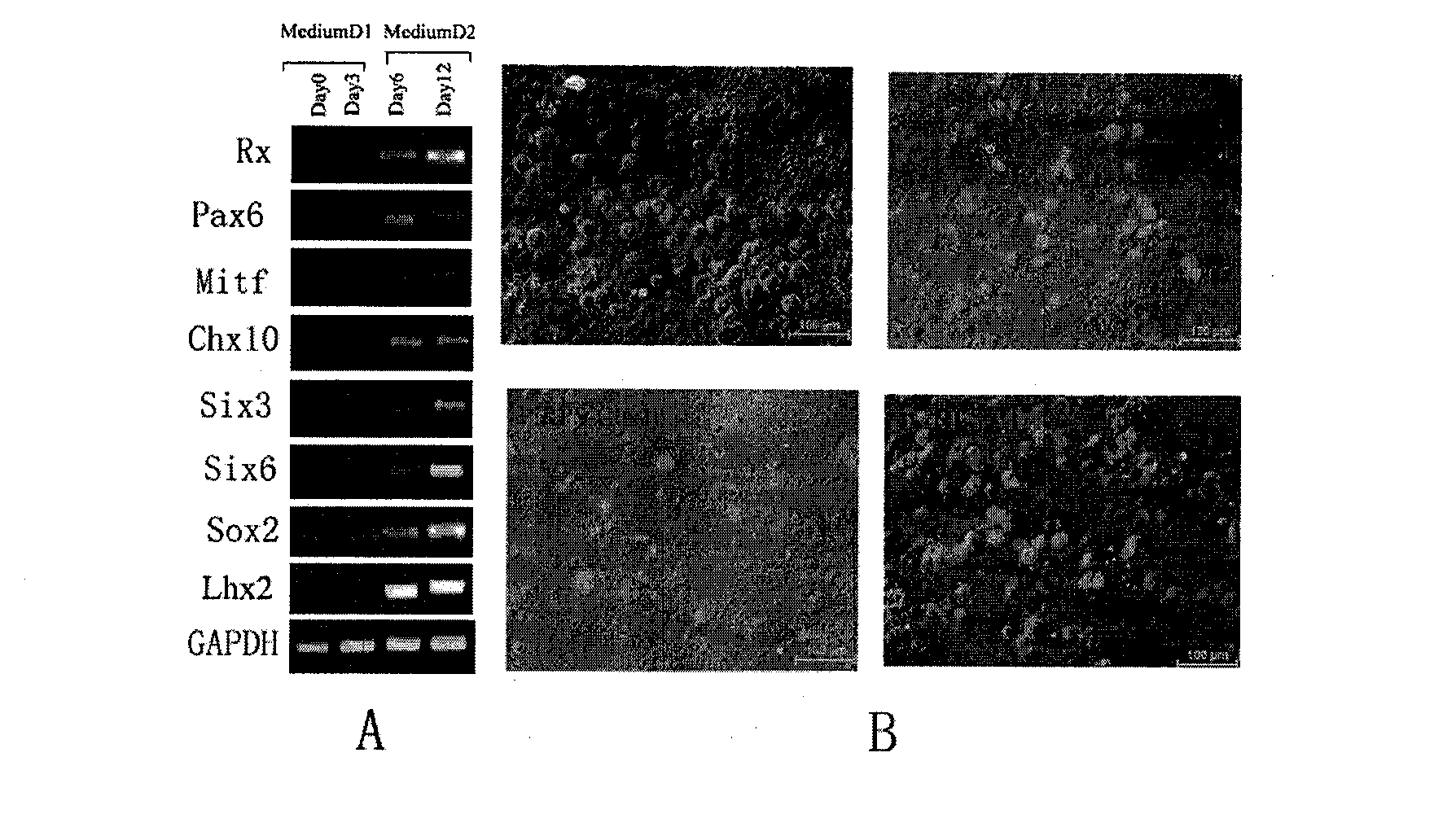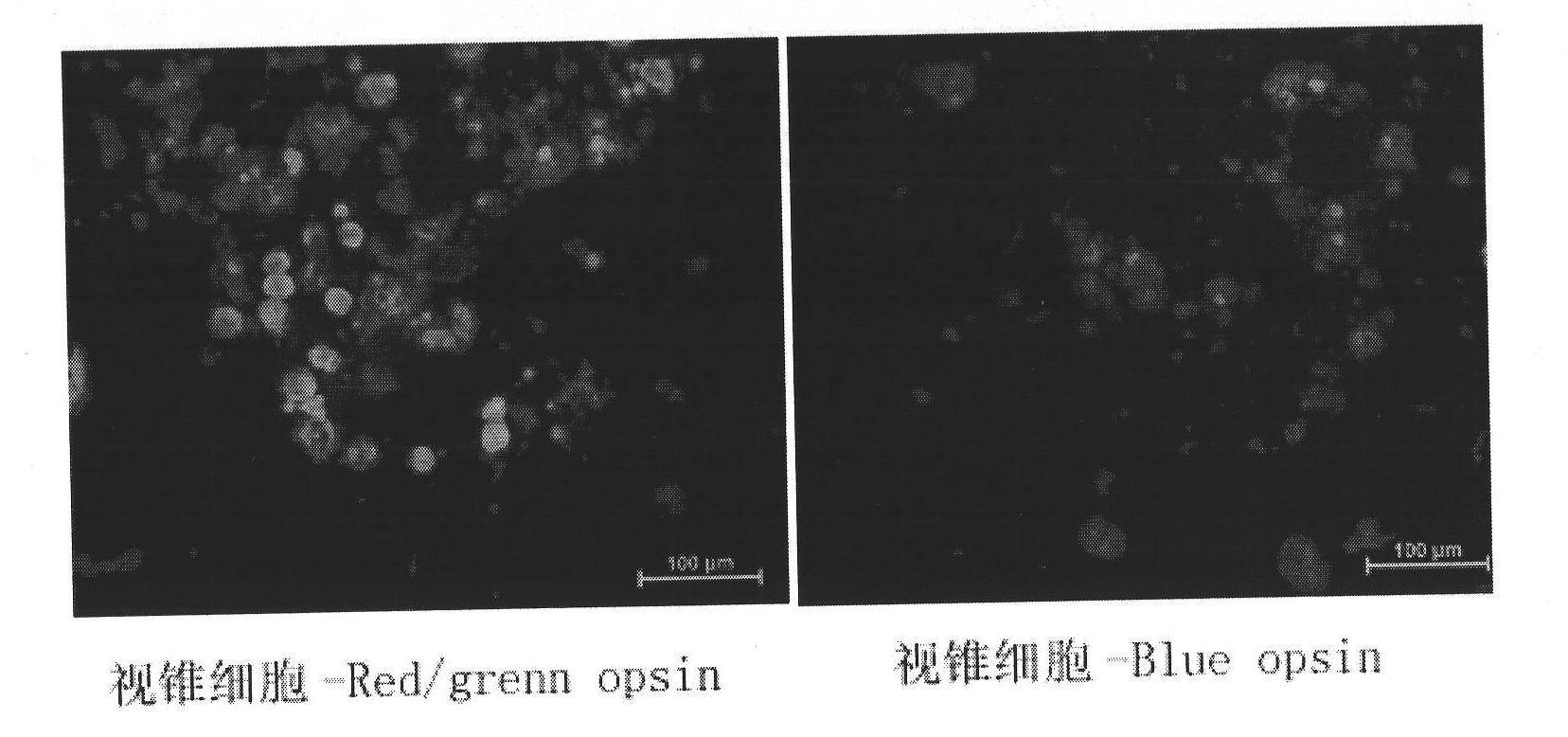Method for generating autologous retinal stem cells and autologous retinal cells by reversely differentiating human body cells, kit and application of autologous retinal stem cells and autologous retinal cells
A somatic cell and retinal technology, applied in the field of biomedicine, can solve the problems of long-term efficacy and safety that cannot be promoted clinically
- Summary
- Abstract
- Description
- Claims
- Application Information
AI Technical Summary
Problems solved by technology
Method used
Image
Examples
Embodiment 1
[0073] Example 1: Production of plant and protein-induced retinal stem cells using peripheral venous blood / umbilical cord blood as raw material cells
[0074] Peripheral venous blood and umbilical cord blood (donated by scientific research staff, Beijing Wangjing Hospital, Beijing Wuzhou Women's Hospital, etc.) were collected aseptically. Before collecting peripheral venous blood / umbilical cord blood, the consent of the blood donor or his immediate family members should be obtained, and the genetic and infectious disease history of the blood donor and his family, as well as all relevant virus test results in the hospital should be recorded.
[0075] Peripheral venous blood / cord blood was routinely anticoagulated and stored at 4°C. Send to the stem cell production center within 24 hours. After the center needs to do the corresponding virus detection again, it will enter the computer registration procedure of the center, and after recording the corresponding barcode number, t...
Embodiment 2
[0078] Example 2 Using peripheral venous blood / umbilical cord blood as raw material cells to produce plant and protein-induced retinal cells
[0079] Peripheral venous blood and umbilical cord blood (donated by scientific research staff, Beijing Wangjing Hospital, Beijing Wuzhou Women's Hospital, etc.) were collected aseptically. Before collecting peripheral venous blood / umbilical cord blood, the consent of the blood donor or his immediate family members should be obtained, and the genetic and infectious disease history of the blood donor and his family, as well as all relevant virus test results in the hospital should be recorded.
[0080] Peripheral venous blood / cord blood was routinely anticoagulated and stored at 4°C. Send to the stem cell production center within 24 hours. After the center needs to do the corresponding virus detection again, it will enter the computer registration procedure of the center, and after recording the corresponding barcode number, the blood ...
Embodiment 3
[0090] In this example, the safety study of transplantation of plant and protein-induced autologous retinal stem cells prepared in Example 1 on nude mice is carried out as follows.
[0091] In two groups of nude mice transplantation experiments, nude mice were subcutaneously transplanted and injected with 1×10 8 plant and protein-induced retinal stem cells or 1×10 8 Personal natural embryonic stem cells (Beijing Wangjing Hospital), observe whether there is tumor formation at the inoculation site. Continuous observation for 90 days.
[0092] The results showed that none of the 10 nude mice in the plant and protein-induced retinal stem cell test group developed tumors, which was relatively safe; while all the 10 nude mice in the human natural embryonic stem cell test group developed tumors.
PUM
 Login to View More
Login to View More Abstract
Description
Claims
Application Information
 Login to View More
Login to View More - R&D
- Intellectual Property
- Life Sciences
- Materials
- Tech Scout
- Unparalleled Data Quality
- Higher Quality Content
- 60% Fewer Hallucinations
Browse by: Latest US Patents, China's latest patents, Technical Efficacy Thesaurus, Application Domain, Technology Topic, Popular Technical Reports.
© 2025 PatSnap. All rights reserved.Legal|Privacy policy|Modern Slavery Act Transparency Statement|Sitemap|About US| Contact US: help@patsnap.com



